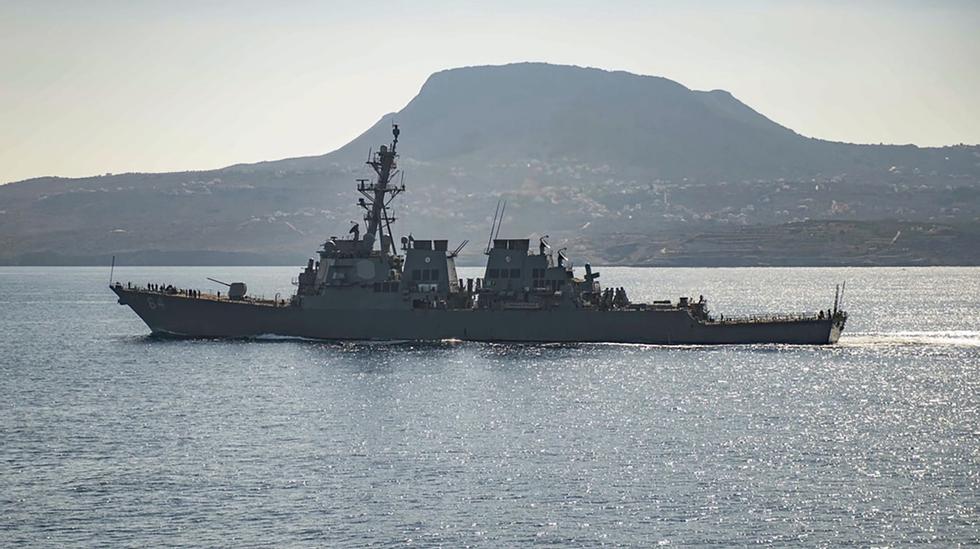Across the region, fighting has been largely limited to attacks between Iranian-backed militias on one side and the United States and Israel on the other.
But attacks launched by both Iran and the United States in recent weeks have raised fears that the proxy conflict between the two countries could turn into a direct conflict.
Until now, the United States and Iran have avoided confronting each other directly. The United States attacked Iranian-backed groups in Yemen, Syria, and Iraq, while Iran-linked groups pursued American individuals in Iraq and Syria. Iran has also launched strikes against what it calls anti-Iranian groups in Iraq, Syria and Pakistan CNN.
Pakistan responded with retaliatory strikes.
Watch the video: A Russian military plane crashed here
Large military footprint
Iran has long opposed the presence of US forces in what it considers its backyard.
In recent decades, Iran has been involved in training, financing, and arming groups in the region.
Article continues below adArticle continues below ad
These groups have become more visible recently. Especially the Houthi rebels in Yemen, who have caused significant delays in the movement of ships through the Red Sea.
In recent years, the United States has tried to distance itself from the Middle East, but has returned to intervening in the region again. They already had a large military footprint in the region before the war, with more than 30,000 soldiers.
However, since the start of the war, Washington has significantly strengthened its military position in the region and, among other things, has moved approximately 1,200 US troops.
Article continues below adArticle continues below ad
In both Syria and Iraq, forces from the two main powers are present at the scene.
Up to 160 thousand soldiers
In Iraq, Iranian authorities have significant influence over several Shiite militias closely linked to the Iranian Revolutionary Guard.
According to some experts, groups such as Kataib Hezbollah, Harakat al-Nujaba, and Kataib Sayyid al-Shuhada have strong ties with Iran.
Article continues below ad
Until 2008, at the height of the Iraq War, the United States had as many as 160,000 troops in the country. Today, about 2,500 soldiers are deployed in several bases.
There were several attacks by Iraqi groups and American forces in the country.
The Iraqi Prime Minister said this month that Iraq wants to withdraw from the US-led coalition present in the country to prevent the return of ISIS. The United States confirmed that its army is present in the country at the invitation of the government.
The United States is considered an invader
Iran has a direct presence in Syria. The Iranian elite unit was deployed after the 2011 uprising to support the regime of Syrian President Bashar al-Assad.
Syria also hosts the Zainabiyoun and Fatemiyoun Brigades, Shiite militias linked to Iran that are believed to be recruiting Afghan and Pakistani fighters.
The United States has 800 troops in Syria as part of the ongoing mission to fight ISIS. Most American forces are stationed in what the army calls the “security zone in eastern Syria,” where the United States supports the Syrian Democratic Forces in the northeast of the country.
Article continues below adArticle continues below ad
There is also some presence of US forces in southeastern Syria, where the United States supports the Free Syrian Army, which also opposes the Syrian regime. The regime considers the United States an invader.
Also in Syria, several attacks occurred between Iranian-backed groups and US forces.
Alliance with more than 20 countries
However, the most prominent part of the proxy conflict between Iran and the United States is taking place in Yemen, where the Houthi movement, backed by Iran, is largely in control.
After Israel declared war in October, they became responsible for several attacks on ships in the Red Sea, and say they are taking revenge on Israel.
American forces deploy warships in the Red Sea off the coast of Yemen. In December, the United States formed a coalition of more than 20 countries to secure commercial traffic against Houthi attacks in the Red Sea.

“Organizer. Social media geek. General communicator. Bacon scholar. Proud pop culture trailblazer.”

